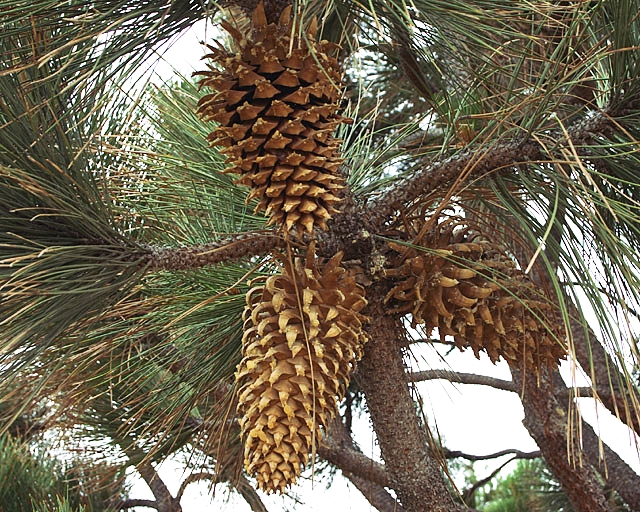Coulter Pine
(Pinus coulteri)
Coulter Pine (Pinus coulteri)
/
/

Rick Sidwell
CC BY-SA 3.0







































































Estimated Native Range
Summary
The Coulter Pine is valued for its drought tolerance and ability to thrive in poor soils, making it suitable for xeriscaping and naturalistic plantings. It is also used for reforestation in its native range. The tree’s large cones are of interest to collectors and can be used decoratively. In cultivation, it requires full sun to part shade, low water once established, and well-drained soils. While it is not commonly afflicted by pests or diseases, its massive cones can pose a physical hazard. Gardeners should be cautious of its potential invasiveness outside its native range and check local regulations before planting.CC BY-SA 4.0
Plant Description
- Plant Type: Tree
- Height: 60-80 feet
- Width: 30-40 feet
- Growth Rate: Slow
- Flower Color: N/A
- Flowering Season: Non-Flowering
- Leaf Retention: Evergreen
Growth Requirements
- Sun: Full Sun, Part Shade
- Water: Low
- Drainage: Fast, Medium
Common Uses
Bird Garden, Butterfly Garden, Deer Resistant, Drought Tolerant, Edible*Disclaimer: Easyscape's listed plant edibility is for informational use. Always verify the safety and proper identification of any plant before consumption., Fragrant, Low Maintenance, Rabbit Resistant, Salt Tolerant
Natural Habitat
Dry, mountainous regions of Southern California and Northern Baja California in mixed evergreen forests, chaparral, and foothill woodlands
Other Names
Common Names: Big-Cone Pine, Big Cone Pine, Coulter’s Pine, Pitch Pine, Coulters Kiefer, Pino Colorado, Pino De Coulter, Pino De Piña Grande, Pino De Brea, Pin À Gros Cônes
Scientific Names: , Pinus coulteri, Pinus macrocarpa, Pinus coulteri var. diabloensis, Pinus ponderosa subsp. coulteri,
GBIF Accepted Name: Pinus coulteri D.Don